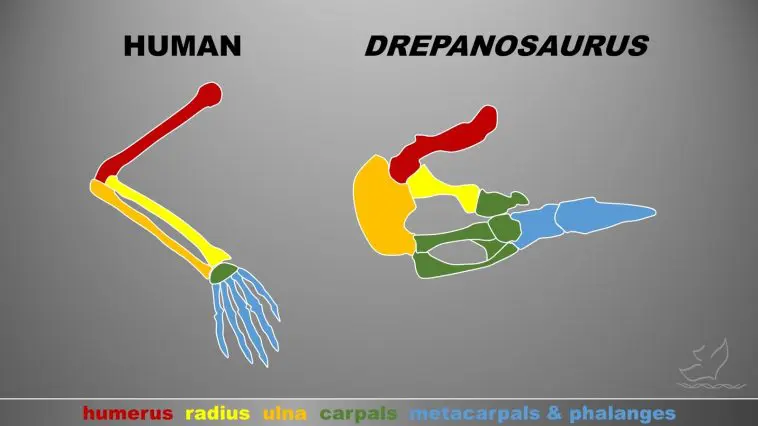[Originally published in 2016 as What’s the deal with Drepanosaurus’s arm?]
A newly discovered fossil from the Triassic Chinle Formation of New Mexico has an arm with a completely unique and bizarre arrangement of bones. Described by Pritchard et al. in Current Biology, The fossil is a reptile called Drepanosaurus, and its forefinger is enlarged like a digging tool. That would be weird enough, but the lower half of its arms also have strange-looking wrist bones.
In humans (like most vertebrate animals), there is one bone in the upper arm (called the humerus) and two bones in the lower arm (called the radius and ulna). We have tiny little wrist bones called carpals and then our finger bones (metacarpals and phalanges). This Drepanosaurus fossil has a humerus, radius, and ulna, but its carpals are enlarged and look like an extra radius and ulna. The forefinger is enlarged to look like a digging tool (it has other fingers not shown in the above diagram).
There are other animals with modified carpals. Most famously, the giant panda has an enlarged sesamoid carpal, which makes it look like it has six fingers. To my knowledge, there isn’t anything else so extreme as Drepanosaurus. I certainly get that impression from the BBC.
What lesson can we learn from this?
Creationists might be tempted to think that this fossil invalidates homology, the pattern of similarity of bones between different species. Again, you might get that impression from exaggerated headlines. But let’s look again: the humerus, radius, and ulna are all there, and the weird, extra bones aren’t really extra. They’re just unusually large carpals. So the bones are all where they’re supposed to be, as we would expect from homology.
Homology is interpreted as an evolutionary relationship by modern biologists, but in the nineteenth century, Richard Owen understood homology to be a design pattern used by the Creator. He would be quite happy with Drepanosaurus, which once again follows the rules of homology.





